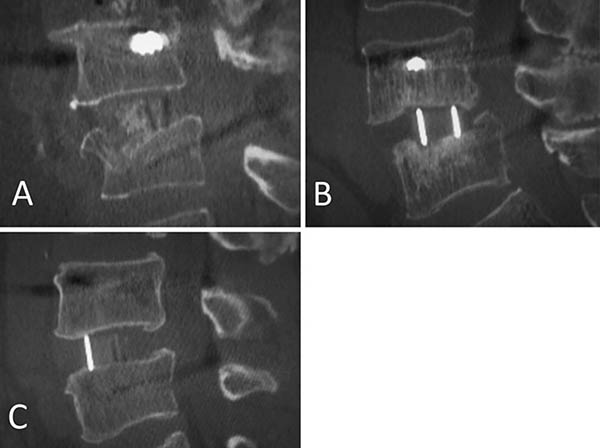- 著者
- Masashi Uehara Shota Ikegami Takashi Takizawa Hiroki Oba Noriaki Yokogawa Takeshi Sasagawa Kei Ando Hiroaki Nakashima Naoki Segi Toru Funayama Fumihiko Eto Akihiro Yamaji Kota Watanabe Satoshi Nori Kazuki Takeda Takeo Furuya Sumihisa Orita Hideaki Nakajima Tomohiro Yamada Tomohiko Hasegawa Yoshinori Terashima Ryosuke Hirota Hidenori Suzuki Yasuaki Imajo Hitoshi Tonomura Munehiro Sakata Ko Hashimoto Yoshito Onoda Kenichi Kawaguchi Yohei Haruta Nobuyuki Suzuki Kenji Kato Hiroshi Uei Hirokatsu Sawada Kazuo Nakanishi Kosuke Misaki Hidetomi Terai Koji Tamai Eiki Shirasawa Gen Inoue Kenichiro Kakutani Yuji Kakiuchi Katsuhito Kiyasu Hiroyuki Tominaga Hiroto Tokumoto Yoichi Iizuka Eiji Takasawa Koji Akeda Norihiko Takegami Haruki Funao Yasushi Oshima Takashi Kaito Daisuke Sakai Toshitaka Yoshii Tetsuro Ohba Bungo Otsuki Shoji Seki Masashi Miyazaki Masayuki Ishihara Seiji Okada Yasuchika Aoki Katsumi Harimaya Hideki Murakami Ken Ishii Seiji Ohtori Shiro Imagama Satoshi Kato
- 出版者
- The Japanese Society for Spine Surgery and Related Research
- 雑誌
- Spine Surgery and Related Research (ISSN:2432261X)
- 巻号頁・発行日
- pp.2021-0183, (Released:2021-12-27)
- 被引用文献数
- 2
Background: In elderly patients with cervical spinal cord injury, comorbidities such as cardiovascular and cerebrovascular diseases are common, with frequent administration of antiplatelet/anticoagulant (APAC) drugs. Such patients may bleed easily or unexpectedly during surgery despite prior withdrawal of APAC medication. Few reports have examined the precise relationship between intraoperative blood loss and history of APAC use regarding surgery for cervical spine injury in the elderly.The presentmulticenter database survey aimed to answer the question of whether the use of APAC drugs affected the amount of intraoperative blood loss in elderly patients with cervical spinal cord trauma.Methods: The case histories of 1512 patients with cervical spine injury at 33 institutes were retrospectively reviewed. After excluding cases without spinal surgery or known blood loss volume, 797 patients were enrolled. Blood volume loss was the outcome of interest. We calculated propensity scores using the inverse probability of treatment weighting (IPTW) method. As an alternative sensitivity analysis, linear mixed model analyses were conducted as well.Results: Of the 776 patients (mean age: 75.1 ± 6.4 years) eligible for IPTW calculation, 157 (20.2%) were taking APAC medications before the injury. After weighting, mean estimated blood loss was 204 mL for non-APAC patients and 215 mL for APAC patients. APAC use in elderly patients was not significantly associated with surgical blood loss according to the IPTW method with propensity scoring or linear mixed model analyses. Thus, it appeared possible to perform surgery expecting comparable blood loss in APAC and non-APAC cases.Conclusions: This multicenter study revealed no significant increase in surgical blood loss in elderly patients with cervical trauma taking APAC drugs. Surgeons may be able to prioritize patient background, complications, and preexisting conditions over APAC use before injury when examining the surgical indications for cervical spine trauma in the elderly.
- 著者
- Kotaro Satake Tokumi Kanemura Hiroaki Nakashima Hidetoshi Yamaguchi Naoki Segi Jun Ouchida
- 出版者
- The Japanese Society for Spine Surgery and Related Research
- 雑誌
- Spine Surgery and Related Research (ISSN:2432261X)
- 巻号頁・発行日
- vol.1, no.4, pp.203-210, 2017-10-20 (Released:2017-11-27)
- 参考文献数
- 23
- 被引用文献数
- 27 32
Introduction: Few studies have investigated the influence of cage subsidence patterns (intraoperative endplate injury or late-onset cage settling) on bony fusion and clinical outcomes in lateral interbody fusion (LIF). This retrospective study was performed to compare the fusion rate and clinical outcomes of cage subsidence patterns in LIF at one year after surgery.Methods: Participants included 93 patients (aged 69.0±0.8 years; 184 segments) who underwent LIF with bilateral pedicle screw fixation. All segments were evaluated by computed tomography and classified into three groups: Segment E (intraoperative endplate injury, identified immediately postoperatively); Segment S (late-onset settling, identified at 3 months or later); or Segment N (no subsidence). We compared patient characteristics, surgical parameters and fusion status at 1 year for the three subsidence groups. Patients were classified into four groups: Group E (at least one Segment E), Group S (at least one Segment S), Group ES (both Segments E and S), or Group N (Segment N alone). Visual analog scales (VASs) and the Japanese Orthopedic Association Back Pain Evaluation Questionnaire (JOABPEQ) were compared for the four patient groups.Results: 184 segments were classified: 31 as Segment E (16.8%), 21 as Segment S (11.4%), and 132 as Segment N (71.7%). Segment E demonstrated significantly lower bone mineral density (-1.7 SD of T-score, p=0.003). Segment S demonstrated a significantly higher rate of polyetheretherketone (PEEK) cages (100%, p=0.03) and a significantly lower fusion rate (23.8%, p=0.01). There were no significant differences in VAS or in any of the JOABPEQ domains among the four patient groups.Conclusions: Intraoperative endplate injury was significantly related to bone quality, and late-onset settling was related to PEEK cages. Late-onset settling demonstrated a worse fusion rate. However, there were no significant differences in clinical outcomes among the subsidence patterns.
